What’s Important About These Items
As an art teacher today, and one who was a member of a graffiti crew in the mid-1980s, who learned how to pop lock from legend Mr. Wiggles (who was his neighbor), and who showed DJ skills when he scratched on his Fisher Price record player, we felt it was only appropriate that Eric Chambers tell us the story behind each of his seven pieces of artwork. Learn about where each one came from, why it was made, and what it represents in Hip Hop culture and history.
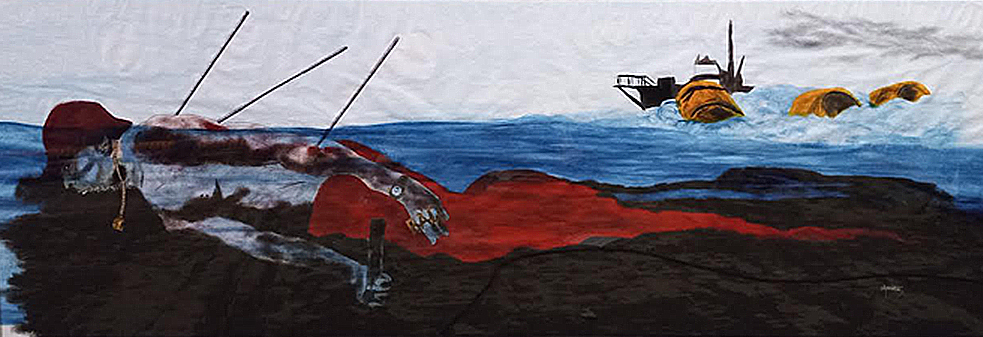
Before Eric creates collages of his favorite Hip Hop artists, he must consider its necessary components: “What’s going to be the theme behind the current artist I chose? Which song do I want to use as my muse? What’s an iconic line that was used?” For “My Hat Is Like A Shark’s Fin,” whose foundation is his favorite song by LL Cool J, “I’m Bad,” Eric had many lines from which to choose for his visuals. Ultimately, the winner was “they call me Jaws, my hat is like a shark’s fin” because Eric “always wanted to create a Jaws-inspired work of art, and using LL’s Jaws line, [he] could merge the visuals with symbolism.” In our opinion, his goal – create an original, never before seen portrait of LL Cool J – was achieved.
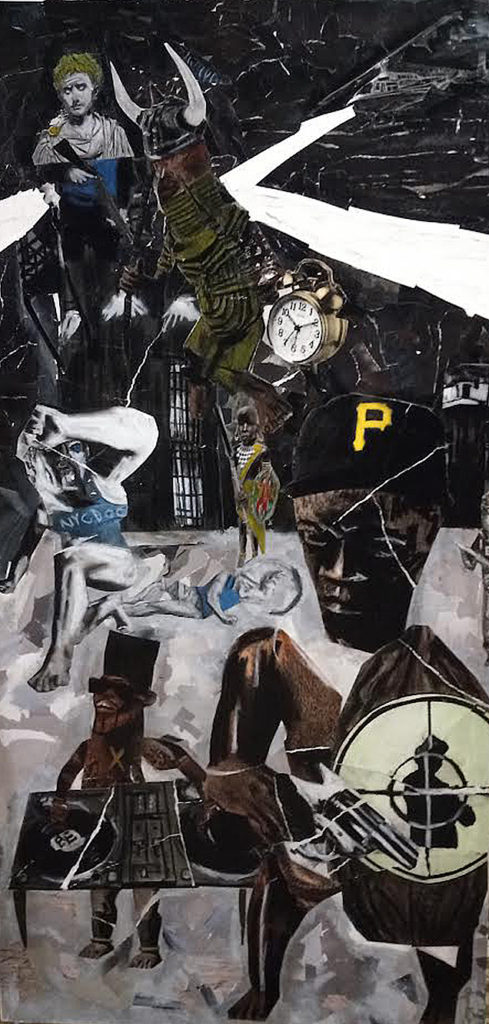
Eric’s collage marries icons from the motherland and Hip Hop. He titled his work after a track on Public Enemy’s “It Takes a Nation of Millions to Hold Us Back,” which is about a conscientious objector who escapes from prison. He illustrates P.E., considered to be the greatest Pro-Black Hip Hop group of all time, via drawings of African male warrior statues from Tanzania, Benin, Liberia, and Nkondi Congo, Eric illustrates. He described the work: “Flavor Flav (the Cold Lamper), provides Chuck D (the Conscientious Objector), and together they venture out into the courtyard. As the S1Ws are fighting against the Roman statute prison guards, DJ Terminator X is yelling with his hand, providing the soundtrack of chaos during this epic nighttime prison break.”
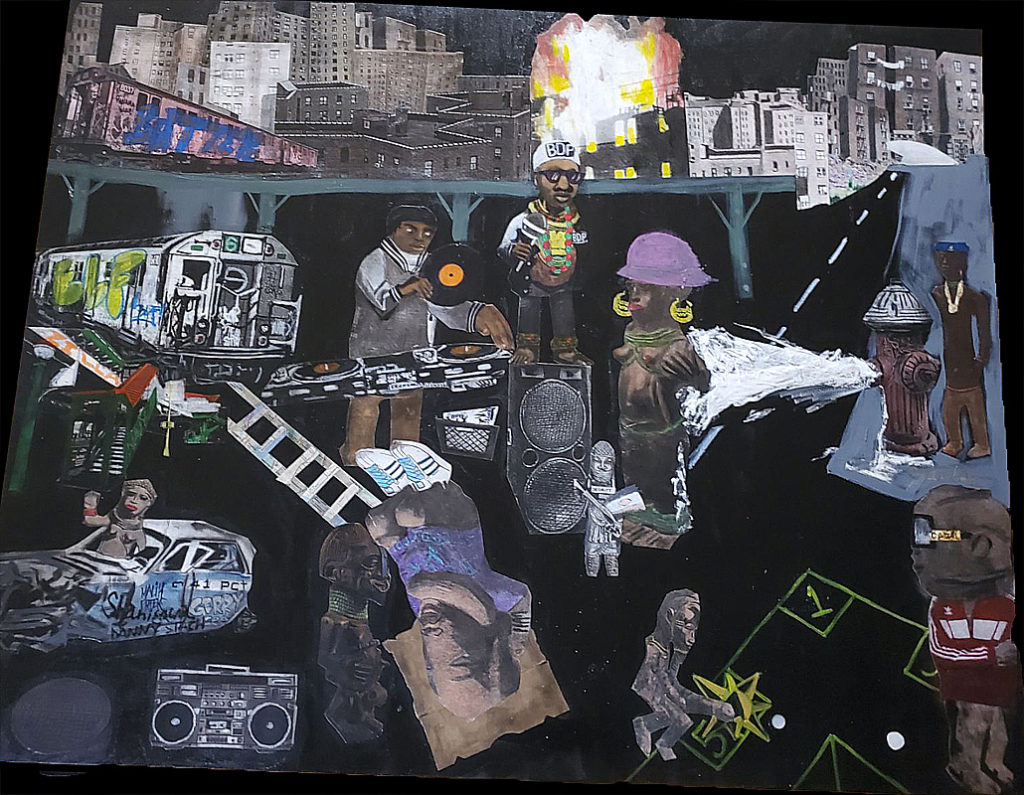
Eric’s awareness of the Bronx slumlords’ racism-fueled greed underscores this painting. His “And Now A Word From Our Sponsor” paints literally and historically the Boogie Down’s resemblance to “a third world nation, once the DJs in the park dug in their milk crates and spun hits from Boogie Down Productions, Run DMC, Heavy D, EPMD, and other future legends. That’s when the breakers brought out the linoleum and cardboard boxes, and rappers lined up for a chance to ‘bless the mic for the Gods.’” Eric’s artwork visually broadcasts “a typical ‘Do The Right Thing’ day in the burned down Bronx era.”
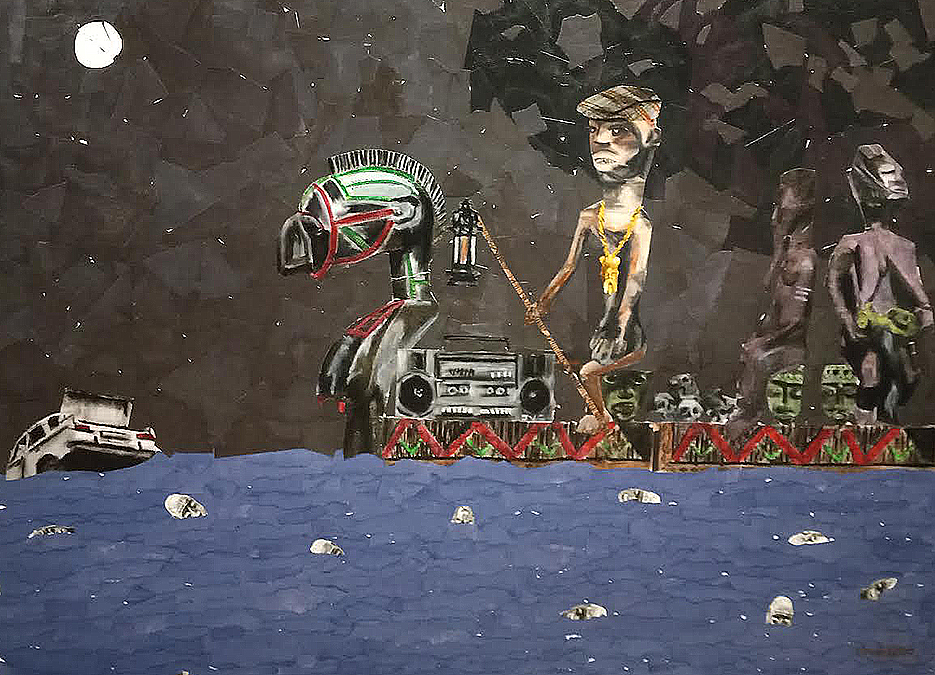
Trust the creator to speak best about their formation. Here is Eric on his painting: “In Greek mythology, Charon was the Ferryman who transported the souls of the dead across the waters of Hades for the fee of a single coin. In Hip Hop culture, the demonic Ferryman is depicted by wearing an applejack cap and truck jewels, while holding a lantern on a pole while blasting the likes of The Cold Crush Brothers, Grandmaster Flash & The Furious Five, Fearless Four, and other first-generation forefathers on his boombox. Those who passed away would have to cross the Bronx River Styx to the underworld, and Charon would take them on this journey. His fee for carrying the dead across these treacherous waters was a single cassette tape full of the dopest rap songs. Those who could not pay Charon’s fee, or were buried without a cassette tape, were said to have wandered as ghosts throughout the banks of The Bronx River Styx for 100 years before they could be accepted into the Hip Hop kingdom of 1520 Sedgwick Ave.”
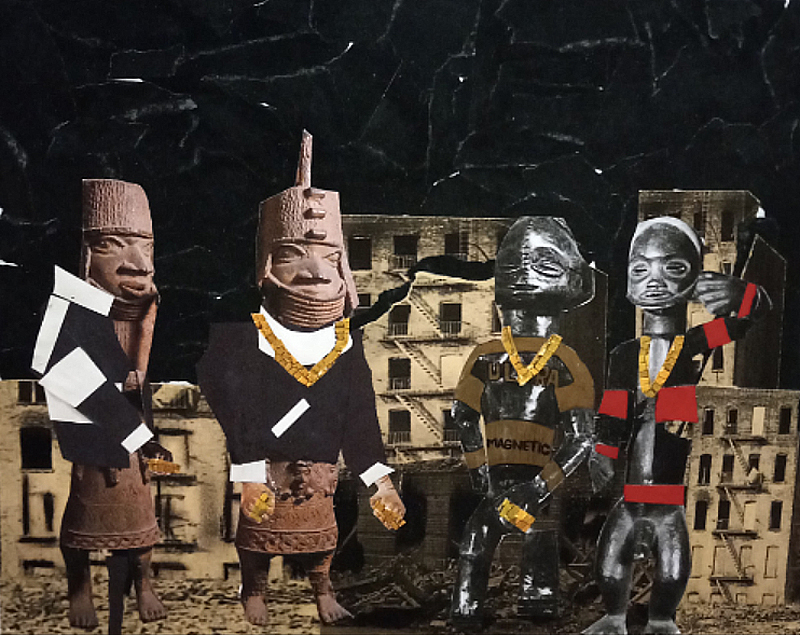
That “Critical Beatdown,” the 1988-released debut by Ultramagnetic MCs, is in Eric’s “top ten rap albums of all time over scores of more critically and financially acclaimed releases” is not a surprise. Eric’s life during junior high school included comic book nerding and part time battle rapping. He would “take all the scientific words I learned in Fantastic Four and Dr. Strange, and use them in rap battles,” he told us. When “Critical Beatdown” came out a few years later, Eric “didn’t know too many people who fully grasped talks of ‘rampaging paramedics, medical utensils, like a battery charged I’m worth the alkaline,’ but it was a lyrical breath of fresh air to me.” His painting is that on the visual tip.
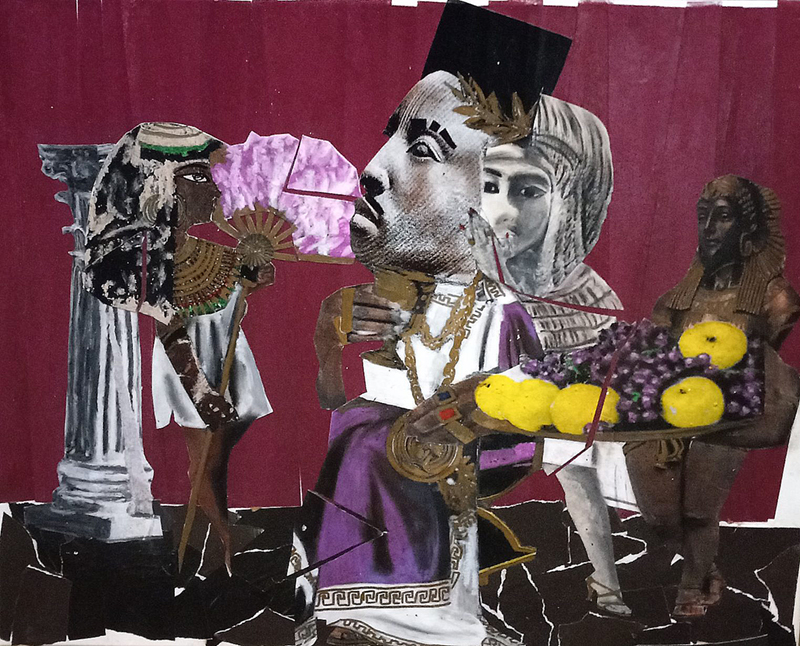
Big Daddy Kane’s debut album, “Long Live the Kane,” has long been appreciated as one of Hip Hop’s golden age discs. Eric had rightfully adored Public Enemy’s “It Takes a Nation of Millions to Hold Us Back,” and he was edgily uncertain about Kane’s album, which was also released in 1988. It would take a lot for Kane to be a part of what Eric feels to be “the best year in Hip Hop.” There was no disappointment here, as Big Daddy Kane’s style – which showed respect to the pioneers as much as it raised the level of rap lyricism – was the foundation of his historical influence. Where Eric’s artistic skills activate is via the album’s cover which, according to him, “blew everything else out the water in that era,” with the exclusions of Ice T’s “Power,” Eric B. & Rakim’s “Paid in Full,” and BDP’s [Boogie Down Production’s] “By All Means Necessary.”
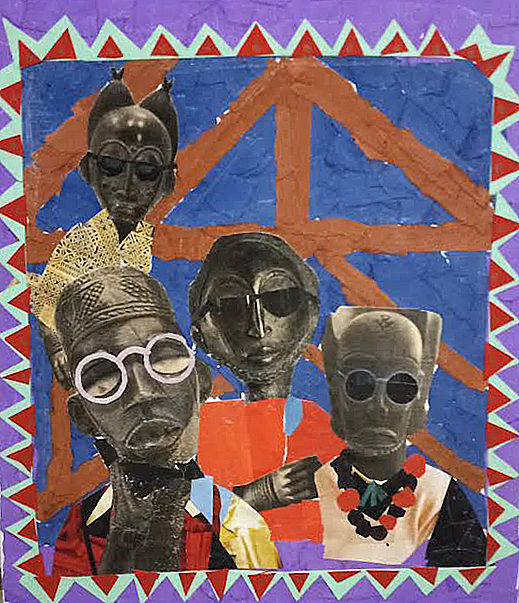
Why Eric Donated These Items to the THHM
Eric had several things in mind when he chose to give his artwork to The Hip Hop Museum, and his students – and young people around the nation – were at the forefront. He declared to us, “I want young observers and middle America not in the know about the history of Hip Hop to look at my works and think, ‘So this is what Hip Hop looked like during its early years.’” Eric’s commitment to preserving Hip Hop, particularly its Golden Era, moved him to recreate and reimagine iconic album covers, with the inclusion of classic lines from songs. The result of these ingredients is allegorical Pro-Black art, seven examples of which have a home at the official record of Hip Hop.
In Eric’s Words
“I’ve participated in every element of Hip Hop since its beginning. I am honored to offer my work where it can hang on walls next to art and memorabilia of the culture I’ve been part of my whole life.” – Eric Chambers


